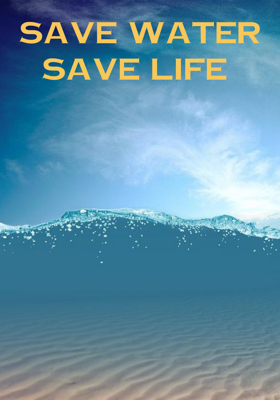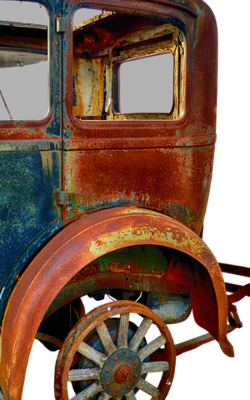Encyclopaedia of planets
Encyclopaedia of planets


Mia's teacher told her that Earth is the only planet that can support life. In return, Mia asked her teacher that are there more planets like Earth in the whole universe that can sustain life? But Mia got a disappointing answer that we're unable to know about all the planets of the universe because the universe is so vast that one can't even imagine! It's also possible that there could be a multiverse too! Mia went home but her mind was full of questions related to planets but as she got the answer that we can't know completely about each and every planet of the universe, she was quite disappointed. Suddenly, a thought struck in Mia's mind that we don't know much about all the planets but we know many things about the planets of the Solar System! So, as Mia reached her home, she threw her bag and tiffin on the floor and went to Mayana: The robot which was a complete encyclopedia, gifted and invented/ made by Mia's very own father!
Mia: Mayana! Today, I wanna know about the planets of our Solar System deeply, and yes! Don't forget Pluto!
Mayana: Sure.
The Solar System has formed Billions of years ago. The word solar means " Sun". So, the Sun's whole family comprising all the eight planets, their satellites, dwarf planets, asteroids, etc. is called, Solar System.
A simple definition that completely and easily explains what a planet is:-
Planet: A heavenly body that revolves around its star in its fixed elliptical paths known as Orbits. In the Greek language, planet means wanderer. A planet is a non-luminous body or it doesn't produce any light of its own, instead, it reflects the light from its star.
In our Solar System, there are 8 planets: Mercury, Venus, Earth, Mars, Jupiter, Saturn, Uranus, and Neptune.
• Mercury, Venus, Earth, and Mars are terrestrial planets.
• Jupiter, Saturn, Uranus, and Neptune are the gas giants. ( Gas giants are also called Jovian Planets)
* Pluto was a planet once. It was the ninth planet of the Solar System, but on 24 August 2006, the International Astronomical Union ( IAU) gave Pluto the status of a ' dwarf planet'.
• Pluto was discovered in 1930.
• Pluto is smaller than Earth's moon!
• Pluto's largest moon is Charon, half the size of Pluto.
• Other four moons of Pluto are Nix, Styx, Hydra, and Kerberos.
Fun Fact: Astronauts on the ISS( International Space Station) witness around 15 sunrises and 15 sunsets every day!!
Inner Planets:-
Inner Planets orbit closest to the Sun. Mercury, Venus, Earth, and Mars are the Inner Planets, they are solid and rocky.
Outer Planets:-
Outer Planets are made of gases. Jupiter, Saturn, Uranus, and Neptune are the Outer Planets.
Mercury:-
The smallest planet of our Solar System is Mercury. It completes its one orbit around the Sun in 88 days or one year on Mercury is of 88 days. It takes 59 days to rotate on its axis or one day on Mercury is of 59 Earth days! Mercury is 58.892 million km far from the Sun. Mercury doesn't have any moons or natural satellites. Mercury is a dense planet with a thick crust and solid iron core. Besides being the closest planet to the Sun of the Solar System, Mercury is also the quickest planet of the Solar System to revolve around the Sun.
Venus:-
Venus is the hottest planet in the Solar System. It's also called, Earth's Twin. It is called the " Morning Star" as it's visible before sunrise and the " Evening Star". It is the brightest planet in the Solar System. It is 108.58 million km far from the Sun. It takes 224.7 days to revolve around the Sun and 243 days to rotate on its axis. That's why a day on Venus is longer than a year! Venus is made of a central iron core and a rocky mantle, just like our Earth. The average temperature on Venus is about 462°C which is extremely hot, making it the hottest planet of the Solar System even hotter than Mercury: the closest planet to the Sun. Venus is a completely dry world, where all the water on it has evaporated because of its hotness. Venus also has 0 moons.
Earth:-
The only planet which can support and sustain life is Earth: the third planet of the Solar System making it not so hot and not so cold. It's 148.18 million km far from the Sun. It takes 365 ¼ days to revolve around the Sun and 24 hours to rotate on its axis. Earth's core is made of iron and nickel. Earth's mantle is made of rock containing silicon, iron, magnesium, aluminum, oxygen, and others. Earth orbits in the Goldilocks Zone where it receives enough energy to allow water to exist as a liquid on its surface. It is the fifth-largest planet in the Solar System. It is also called the Blue Planet because of the presence of water on its surface. It has 1 natural satellite which we call, The Moon.
Mars:-
Mars is the fourth planet from the Sun. It is the second smallest planet in the Solar System. It is 240.64 million km far from the Sun. It takes 1.88 Earth years to complete one orbit around the Sun and 1.03 Earth days to rotate on its axis. Just like Earth, it has a central core made of metallic iron and nickel surrounded by a silicate mantle and crust. It has the largest known volcano of the Solar System, called, Olympus Mons. It is called the Red Planet because of the presence of a mineral called Iron Oxide on its surface. Mars is expected to sustain life according to scientists and researchers. Life can be possible on Mars! Mars has 2 moons: Phobos and Deimos.
Asteroid Belt:-
Asteroids are the leftovers from the Solar System's formation, 4.6 billion years ago. According to scientists, more than a million asteroids are orbiting the sun in the Asteroid Belt, present between Mars and Jupiter. Some of them even have their own moons!
Jupiter:-
Jupiter is the largest planet in our Solar System and it rotates extremely fast!! It is 749.03 million km far from the Sun. It takes 4330.6 days to revolve around the Sun and 0.41 days or 10 hours to rotate on its axis. Its atmosphere is made of hydrogen and helium gas just like the Sun. Jupiter is covered in thick red, yellow, white, and brown clouds. Jupiter is also a stormy planet There are many storms on Jupiter and most of them are never-ending, a great example is, The Great Red Spot, which is visible on Jupiter. The cloud formations and storms on Jupiter make it a Colourful Planet. It is popularly known as a Gas Giant. It is named after the Roman God Jupiter. Jupiter has 79 moons with 53 named moons and 26 are yet to be named officially. Some of the most prominent Jupiter moons are:-
Metis, Adrastea, Amalthea, Thebe, lo, Europa, Ganymede, Callisto, Thermisto, Leda, Ersa, Pandia, Himalia, Lysithea, Elara, Dia, Carpo, Valetudo, Euporie, Eupheme, Helike, Euranthe, Hermippe, Praxidike, Thyone, Thelxinoe, Ananke, Mneme, Orthosie, Harpalyke, Iocaste, Erinome, Aitne, Herse, Taygete, Eukelade, Carme, Isonoe, Autonoe, Philophrosyne, Cyilene, Pasithee, Pasiphae, Sponde, Eurydome, Kalyke, Hegemone, Kale, Kallichore, Chaldene, Arche, Eirene, Kore, Megaclite, Aoede, Callirrhoe and Sinope.
Ganymede is the largest natural satellite of the Solar System.
Saturn:-
Saturn is the second-largest planet in the Solar System. It is surrounded by nine prominent rings. It's the sixth planet from the Sun. It is 1. 4831 billion km far from the Sun. It takes 10,755 days to revolve around the Sun and 0.44 days or 10.656 hours to rotate on its axis. It is the least dense planet making it float on water. It is made of Hydrogen and Helium, the two lightest elements of the universe, thus, it's the lightest planet of the Solar System. Its rings are 2, 73, 600 km wide! But the rings are less than a kilometer thick! Saturn's rings are made of dust, rock, and ice. Saturn has 82 moons. 53 moons are named and confirmed while 29 are awaiting confirmation and official names. The 53 named moons of Saturn are:-
Aegaeon, Aegir, Albiorix, Anthe, Atlas, Bebhionn, Bergelmir, Bestla, Calypso, Daphnis, Dione, Enceladus, Epimetheus, Erriapus, Farbauti, Fenrir, Fornjot, Greip, Hati, Helene, Hyperion, Hyrrokkin, lapetus, ljiraq, Janus, Jarnsaxa, Kari, Kiviuq, Loge, Methone, Mimas, Mundilfari, Narvi, Paaliaq, Pallene, Pan, Pandora, Phoebe, Polydeuces, Prometheus, Rhea, Siarnaq, Skathi, Skoll, Surtur, Suttungr, Tarqeq, Tarvos, Telesto, Tethys, Thrymr, Titan and Ymir.
Titan is the largest moon of Saturn and the second-largest moon of the Solar System.
Fun Fact: A sample of Sir Issac Newton's apple tree was sent into space.
Uranus:-
Uranus is the seventh planet from the Sun. Its axis is tilted for about 90° thus when it rotates it looks like a giant wheel. It is 2.951 billion km far from the Sun. It takes 30,685 days to revolve around the Sun and 0.71 days or 17.24 hours to rotate on its axis. Uranus' mantle is icy water and ammonia. The atmosphere of Uranus has methane in it. Uranus has 27 confirmed moons as follows:-
Ariel, Belinda, Bianca, Caliban, Cordelia, Cressida, Cupid, Desedemona, Ferdinand, Fransisco, Juliet, Mab, Margaret, Miranda, Oberon, Ophelia, Perdita, Portia, Prospero, Puck, Rosalind, Setebos, Stephano, Sycorax, Titania, Trinculo and Umbriel.
Neptune:-
Neptune is the coldest of the eight planets of the Solar System. It is 4.4749 billion km far from the Sun. It takes 61, 190 days to revolve around the Sun and 0.67 days or 19.11 hours to rotate on its axis. Neptune's atmosphere contains hydrogen, helium, and methane. Neptune has 14 confirmed moons as follows:-
Despina, Galatea, Halimede, Hippocamp, Laomedeia, Larissa, Naiad, Nereid, Neso, Proteus, Psamathe, Sao, Thalassa and Triton.
Pluto:-
Pluto is a dwarf planet. It is 5.9 billion km far from the Sun. It takes 90,520 days to revolve around the Sun and 6.39 days to rotate on its axis. Pluto has a rocky core surrounded by a mantle of ice with methane, carbon monoxide, and nitrogen ice coating the surface. Pluto is the smallest planet that's why a dwarf planet and the farthest in the Solar System. Earlier, Pluto was considered as a planet after its discovery on 18 February 1930. In 1999, a group of scientists attempted to re-classify Pluto as a comet. But on 24 August 2006, Pluto was stated as a dwarf planet. Pluto had been a planet for 75 years!
Fun Fact: In 2018, some scientists published a paper arguing that Pluto should be reclassified as a planet, after reviewing scientific papers from 1802.
Mia: Wow! This much information! Ahh!! I will try my best to remember everything! Today, I've got all my questions related to our Solar System answered!
Mayana: If you'll not remember, I'm always here to remind you!!



























































